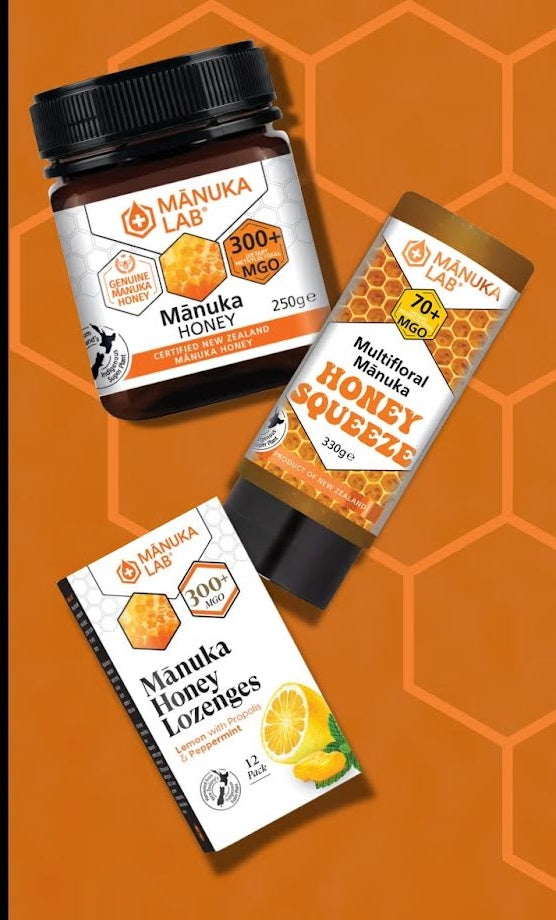

Honey is seen as one of the best household remedies in the world. Its sweet taste and antibacterial constituents have made them a favourite of many. Whether you are talking about fighting off the cold or boldly applying it on yourself to prevent dry skin during cold, this product is always here. But Manuka Honey is one variant of it that is turning heads most. Harvested from the Manuka trees from New Zealand, this version of honey is less sweet, has fewer calories, and holds far more nutritional value than standard honey.
But how is the Manuka honey made?
From flowering to packing – A journey for creating Manuka Honey
Flowing
The journey of the creation of a Manuka honey is a long and eventful one. It starts with
Manuka trees of New Zealand become the subject of nectar for this honey. A native of this region, Manuka trees have a white flower, with sometimes a tinge of pink. They start booming around the winter of December to Mid January. The harvesters place the hives in specific areas so that an abundance of Manuka flowers can be pollinated.
Transformation
After flowing comes transformation. Honey Bees start foraging the nectars of Manuka honey during day times when the temperature is around 70 degrees Fahrenheit. As the weather conditions are critical to the transformation stage, bees must complete the pollination process within 4 to 6 weeks.
After collecting the pollen, the Manuka particulates get transformed into honeycomb cells. And then the waiting begins. The nectar arrives as 70% water, which is then evaporated down to 20%, which bees take care of for the most part by repeatedly beating their wings - the warm temperatures (which are around 95 degrees) also help. Once the honey dries, wax is produced by the bees to prevent the absorption of moisture.
Harvesting the honey
As the wax prevents reabsorption, viscosity starts to develop. And when the time comes to harvest the honey - which depends on the current weather - Manuka Lab starts the Manuka honey extraction process. Our experts go to the sites and begin the harvesting process, which is humane, and ensures that no harm comes to the bee colony. There are three steps involved with the process,
- The wax seal of each cell is pierced
- The honeycomb is spun at high speeds to get out the honey
- The honey is filtered to remove any wax
Why do you need Manuka Honey?
When the common cold persists, our hands automatically move toward our keys to get to a chemist's store that gives us the standard OTC medication. While impactful, they could have negative effects on your health. So, if you want a more traditional remedy to your modern-day and old health issues, Manuka honey, in many ways, has come out as a better alternative.
Here are the top reasons Manuka Honey is finding its way on the kitchen and the doctor's shelves worldwide.
Healing wounds
Researchers have reported that Manuka honey can be a good agent for healing when used in conjunction with other ointments. Directly applying on the wounded region also helps with the healing process. The effectiveness of Manuka honey has been well documented, and it has become a mainstay, and even the US FDA has approved it.
All of it is due to this honey's antimicrobial, antioxidant, and anti-inflammatory properties- due to its MGO - Methylglyoxal - content.
Soothing the throat
Another reason that Manuka honey has been getting so much push in the remedy industry is its effectiveness in soothing a sore throat. A study completed in 2010 reported that Manuka honey is powerful and more effective in alleviating cough-like symptoms than over-the-counter medication.
NICE, the National Institute of Health and Care Excellence, and PHE, Public Health England, even revised their guidelines in 2018, making Manuka honey the "first line of treatment" to deal with short-term cough.
Helping with gut health
Manuka Honey is antibacterial, but at the same time, it is also home to many non-digestible carbohydrates known as oligosaccharides. Only the gut bacteria can digest them, which allows the good bacteria in our gut to stay active and ensure that our metabolism is always up to speed.
Dealing with gastroenteritis
Are you suffering from a bacterial infection of the gut? Manuka honey may be able to help. Its antibacterial properties get into action to fight off strains like Clostridium Difficile, which many reports suggest to shorten the duration of diarrhea.
May contain antiviral properties
Scientists are still forming a coherent opinion about Manuka honey's effectiveness. A study done in 2014 found that within a laboratory setting, Manuka honey can fight off the influenza virus, cronic fatigue syndrome. Another study found that it can also inhibit the growth of shingles.
While human trials are yet to happen, when they do, Manuka honey may prove to be more valuable than it already is.
Manuka Honey has multiple uses, but finding the right honey matters
Manuka Honey must be harvested from the right Manuka trees at the right times and stored under the right climate conditions. Any neglect during any of these variables harms the quality of the Honey. The MGO constituents might be low, or the honey can be adulterated with wax.
Manuka lab have thus taken a pledge of purity. Our experts take meticulous steps so that high-MGO-rated and unadulterated Manuka honey reaches your doorstep. Contact Manuka Lab to learn more about our manuka honey.



